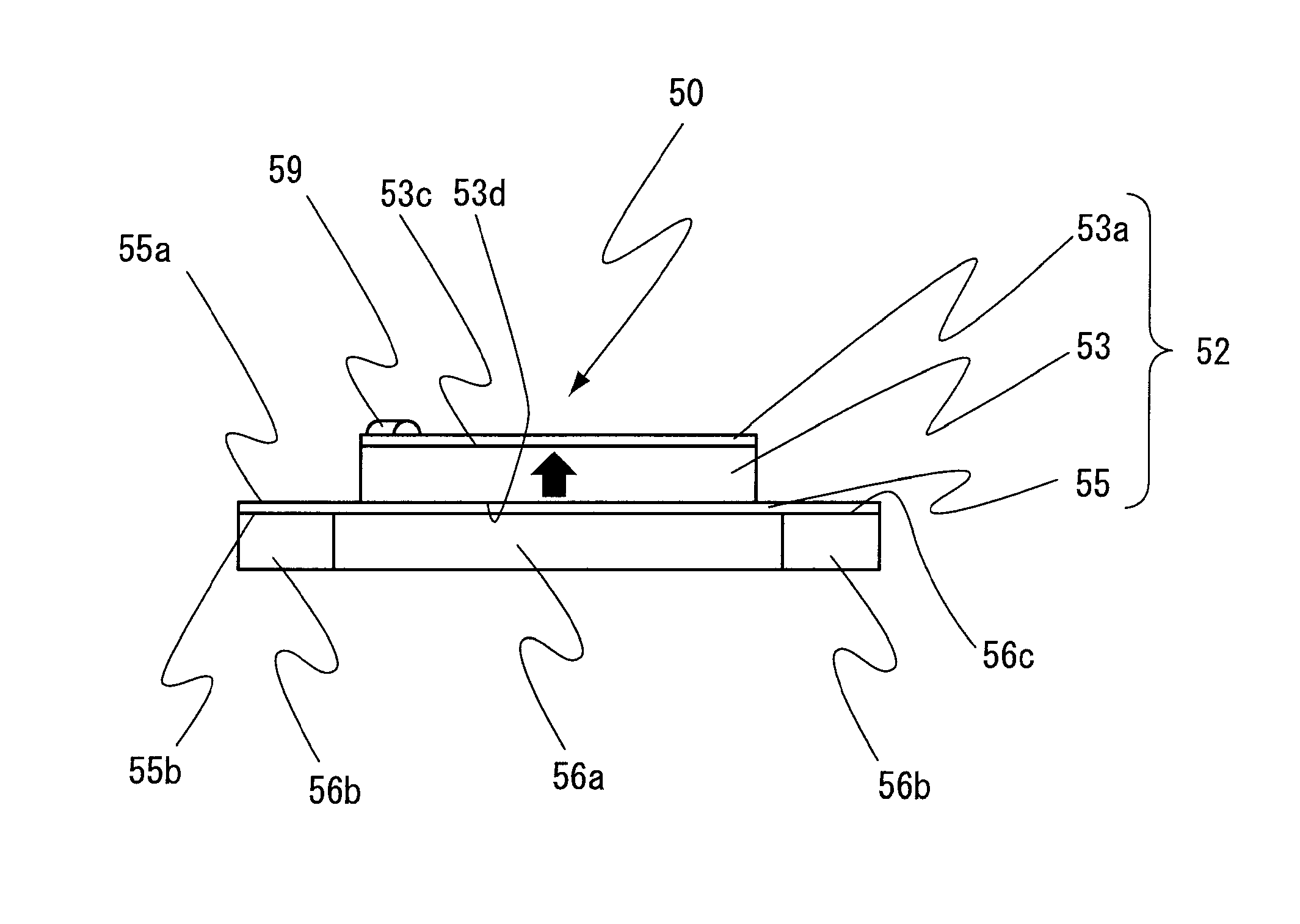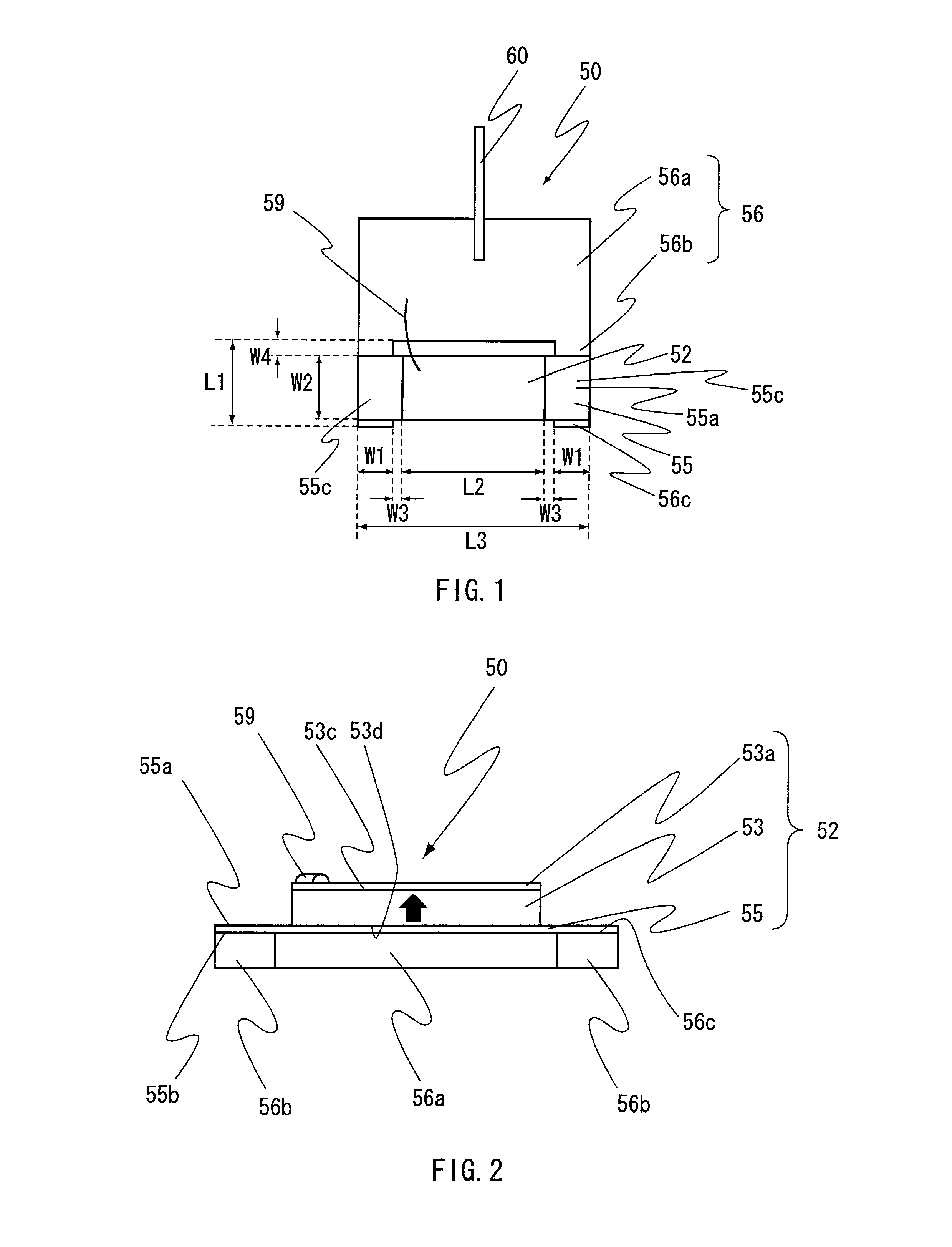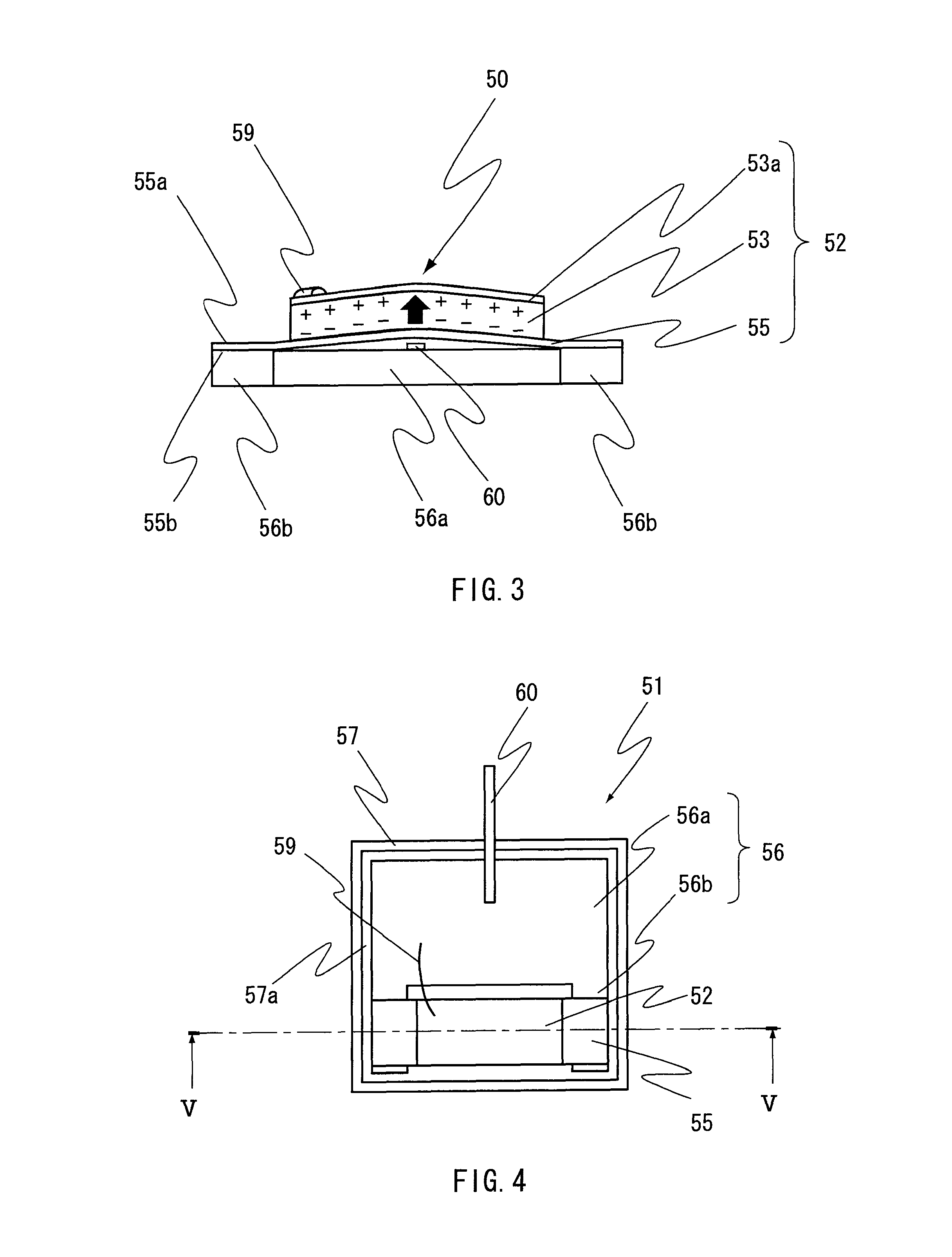Piezoelectric acceleration sensor
a piezoelectric vibrator and acceleration sensor technology, applied in the direction of acceleration measurement using interia forces, instruments, semiconductor devices, etc., can solve the problems of insufficient output sensitivity, difficult performance testing, complicated process for polarizing the piezoelectric vibrator, etc., to achieve superior mass productivity, high output sensitivity, and reduced size
- Summary
- Abstract
- Description
- Claims
- Application Information
AI Technical Summary
Benefits of technology
Problems solved by technology
Method used
Image
Examples
first embodiment
[0025]As shown in FIGS. 1 and 2, a piezoelectric acceleration sensor 50 according to a first embodiment of the present invention comprises a circuit board 56, a lead 59, an output cable 60, a piezoelectric ceramic plate (piezoelectric element) 53 and a metallic sheet 55.
[0026]The circuit board 56 includes a circuit portion 56a and base portions 56b. The circuit portion 56a is formed in a rectangular flat shape. The base portion 56b is formed in a rectangular flat shape. The base portion 56b protrudes from an end portion of the circuit portion 56a. According to the present embodiment, the two base portions 56b project in parallel to each other in a common plane from in the vicinity of opposite end portions of one side of the circuit portion 56a, respectively. In other words, the circuit board 56 is formed in a U-like shape by cutting a middle part of one side of a rectangular circuit board. The circuit portion 56a has an amplifier circuit or the like installed thereon. The lead 59 an...
second embodiment
[0041]As shown in FIGS. 4 and 5, a piezoelectric acceleration sensor 51 according to a second embodiment of the present invention is configured so that the piezoelectric acceleration sensor 50 according to the first embodiment is accommodated within a case 57.
[0042]The case 57 is made of a material which has such stiffness that deformation due to expected acceleration does not occur. The inside of the case 57 is formed with an accommodating space 57a having a support surface 57b. The accommodating space 57a is formed in a size so as to be able to accommodate the circuit board 56 under a state where the piezoelectric vibrator 52 is fixed to and supported by the circuit board 56. The circuit portion 56a and the base portion 56b of the circuit board 56 are adhered to the support surface 57b by a thermosetting epoxy resin or the like so that the support surface 57b is perpendicular to the polarized direction. In other words, a lower surface 56d (opposite surface which is opposite, in th...
example 1
[0054]An example of the piezoelectric acceleration sensor 50a shown in FIG. 6 was made and accommodated within the case 57. Specifically, the piezoelectric ceramic plate 53 having the length L2 of 6.0 mm of the principal surface, the width W2 of 2.0 mm and the height of 0.3 mm was made of a PZT material. The upper electrode 53a and the lower electrode 53b, each made of a silver, were uniformly formed on a pair of the principal surfaces of the piezoelectric ceramic plate 53 so that the piezoelectric vibrator 52a was made. In addition, the circuit board 56 having thickness of 0.5 mm was made of an alumina material. The circuit board 56 is formed in a U-like shape as a whole. In detail, the base portions 56b each having a rectangular shape of 2.5 mm×0.5 mm are integrally provided at opposite ends of the circuit portion 56a having a rectangular shape of 6.0 mm×3.0 mm. A general amplifier circuit using Field Effect Transistor (FET) is installed on the circuit portion 56a. The base portio...
PUM
 Login to View More
Login to View More Abstract
Description
Claims
Application Information
 Login to View More
Login to View More - R&D
- Intellectual Property
- Life Sciences
- Materials
- Tech Scout
- Unparalleled Data Quality
- Higher Quality Content
- 60% Fewer Hallucinations
Browse by: Latest US Patents, China's latest patents, Technical Efficacy Thesaurus, Application Domain, Technology Topic, Popular Technical Reports.
© 2025 PatSnap. All rights reserved.Legal|Privacy policy|Modern Slavery Act Transparency Statement|Sitemap|About US| Contact US: help@patsnap.com



